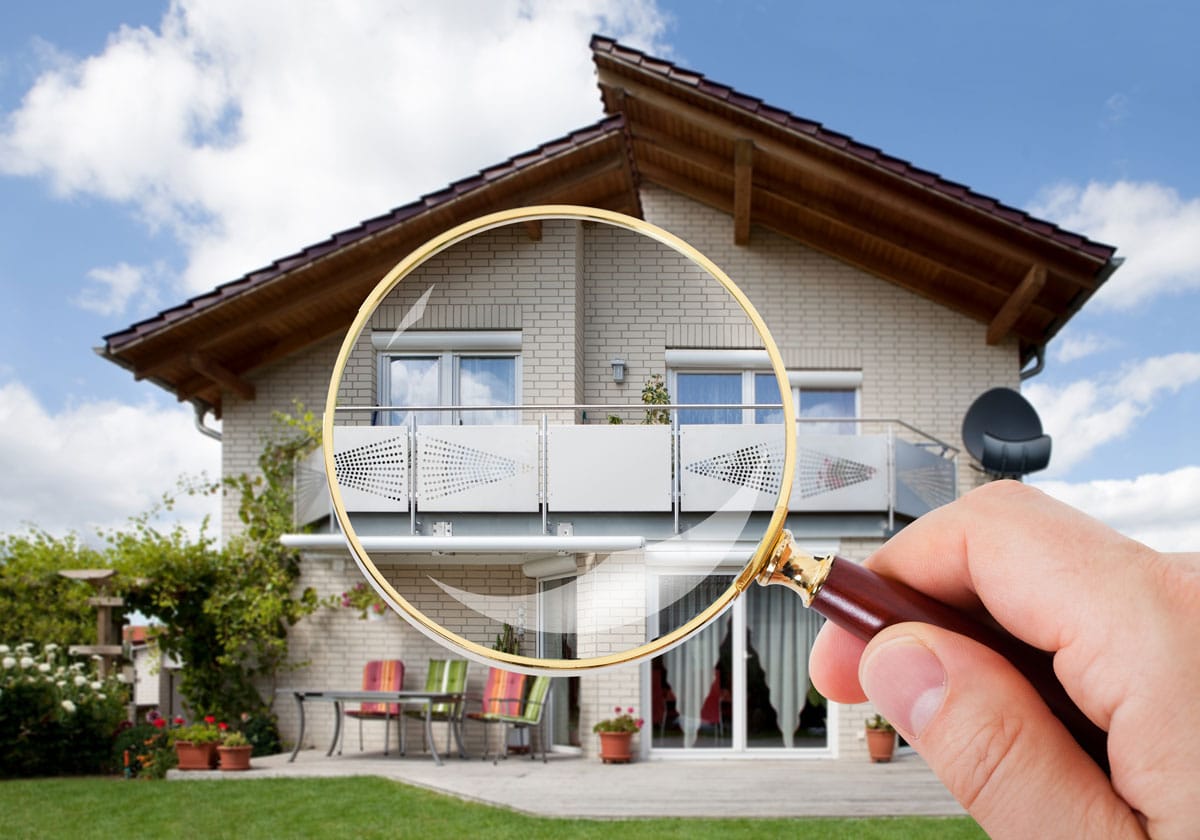What Is Consisted of in a Thorough Property Evaluation Process?
A detailed property examination procedure is important for safeguarding financial investments and guaranteeing safety and security. It encompasses a thorough assessment of architectural integrity, electric systems, plumbing, and Cooling and heating systems, amongst other important components. What, after that, are the most vital facets that can make or break a building assessment?
Introduction of Residential Or Commercial Property Examination

The assessment encompasses numerous key locations, including the outside and interior aspects, systems such as plumbing and electrical, and any kind of visible architectural elements (Phoenix property inspections). Throughout the process, the examiner records the condition of these aspects, looking for indications of wear, damages, or potential risks
A complete residential or commercial property examination not only aids prospective customers make educated choices yet likewise assists present proprietors in understanding needed fixings or maintenance tasks. By giving a comprehensive record of searchings for, the inspection enables stakeholders to prioritize problems that might need prompt focus or could impact future investment.
Additionally, an efficient examination procedure sticks to developed sector standards and guidelines, ensuring a trustworthy and regular analysis. On the whole, the property inspection process is an important tool in real estate transactions, promoting openness and guarding both customer and vendor rate of interests.
Structural Evaluation

During the assessment, specialists analyze various components, including the foundation, framing, walls, and roofing system systems. They search for indicators of moving or resolving, such as splits in wall surfaces or irregular floorings, which can indicate underlying concerns. The analysis additionally entails checking out the top quality of building products and methods utilized, guaranteeing compliance with structure codes and criteria.
In addition, examiners may check for indicators of dampness invasion, which can result in wood rot and mold and mildew, more jeopardizing structural integrity. They additionally review load-bearing aspects to ensure they can properly support the weight of the building and its contents.
Ultimately, a thorough architectural evaluation gives indispensable understandings for potential customers and house owners, allowing them to make educated decisions relating to property investments and necessary maintenance. By determining structural issues early, owners can attend to problems proactively, preserving the long-lasting value and safety of the residential or commercial property.
Electric System Assessment
An efficient electric system assessment is important in the property evaluation procedure, as it reviews the safety, performance, and conformity of a structure's electric infrastructure - Commercial property inspections. This analysis generally includes a complete exam of the main electrical panel, circuit breakers, and electrical wiring systems. Inspectors seek indicators of wear, corrosion, or damage that may compromise safety
The assessment includes testing for sufficient grounding and bonding, making sure that the electric system is properly linked to stop electric shock or fire dangers. Assessors additionally examine the ability of the electric system to manage the present tons, determining any potential overloading concerns that can cause failures or failures.
In addition, the analysis look for the existence of GFCI (Ground Fault Circuit Interrupter) and AFCI (Arc Fault Circuit Interrupter) tools in proper places, which are important for protecting versus electric shocks and stopping fires. Compliance with neighborhood structure codes and policies is also validated to make certain that any type of setups or modifications fulfill security standards.

Plumbing and A/c Checks
Adhering to the electric system analysis, the plumbing and HVAC checks are essential elements of the building inspection process. These assessments guarantee that the necessary systems of the building are operating properly and securely, thereby safeguarding the investment and well-being of his comment is here the residents.
During pipes examinations, specialists examine the condition of pipes, fixtures, and water drainage systems. They examine for leaks, corrosion, and any kind of indicators of water damage that could show bigger problems. The efficiency of water heating systems is additionally examined to ensure they fulfill existing requirements and provide adequate warm water supply.
The a/c checks involve a thorough exam of air, ventilation, and home heating conditioning systems. Inspectors will certainly assess the functional effectiveness of these systems, ensuring that they keep a comfortable interior environment. This consists of checking the heater, air ductwork, thermostat, and conditioner functionality. Furthermore, the assessor will look for any kind of signs of wear or prospective safety and security risks, such as carbon monoxide gas leaks in heating unit.
Exterior and Inside Inspections
Exterior and indoor examinations are vital facets of the residential or commercial property examination process, giving a comprehensive introduction of a residential or commercial property's problem. The external inspection involves examining architectural components such as the roof, home siding, foundation, and windows. Examiners seek indications of wear, damages, or potential dangers, consisting my company of water intrusion, mold and mildew growth, and bug problems. They also analyze the surrounding landscape, making sure correct water drainage and determining any kind of trees or plant life that may endanger the building.
The interior assessment focuses on the problem of living areas, including wall surfaces, flooring, and ceilings. Inspectors take a look at the performance of doors, windows, and devices, while likewise looking for indications of moisture or architectural issues. Electric systems, plumbing components, and HVAC devices are scrutinized to guarantee they are in working order, compliant with building regulations, and free from safety and security hazards.
Both examinations culminate in a thorough report that highlights essential findings and referrals for repairs or additional evaluations. This double approach guarantees that potential purchasers or proprietors are totally notified concerning the residential property's strengths and weak points, enabling them to make educated decisions.
Verdict
To conclude, an extensive building inspection process includes a considerable evaluation of structural stability, electric systems, pipes, and cooling and heating units, alongside in-depth outside and indoor examinations - Best home inspections. By systematically analyzing each critical component, potential security risks and conformity with market requirements and regional structure codes can be determined. The resultant in-depth record acts as a crucial source, equipping purchasers and property owners to make enlightened choices relating to home investments and maintenance, ultimately enhancing safety and value
A detailed residential or commercial property evaluation process is important for safeguarding investments and guaranteeing visit safety and security.During the inspection, specialists assess numerous elements, consisting of the foundation, framing, wall surfaces, and roof covering systems.A reliable electric system evaluation is critical in the residential property assessment process, as it examines the security, performance, and compliance of a building's electrical infrastructure.Outside and indoor assessments are crucial aspects of the property examination procedure, supplying a comprehensive overview of a home's problem.In verdict, a detailed property evaluation process includes a substantial analysis of structural integrity, electrical systems, pipes, and Heating and cooling units, together with in-depth outside and interior evaluations.